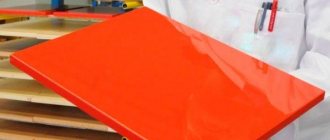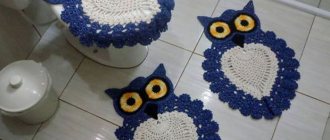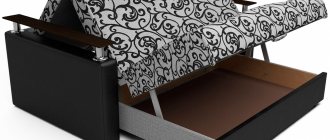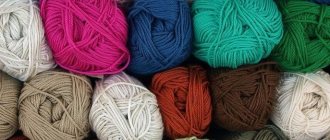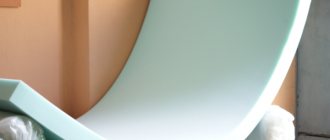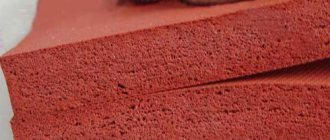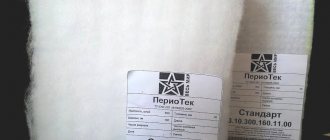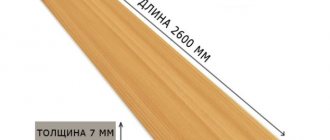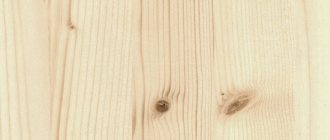Foam rubber is an indispensable material in many areas. Probably each of us has at least once encountered its use in everyday life. But despite the widespread and simplicity of polyurethane foam, due to its diversity and improved performance properties, buyers have difficulty making a choice. This is especially true for furniture foam rubber. It must be admitted that for such purposes the material really should be selected with special care. After all, this directly determines how long it will last and how convenient it will be for filling a mattress, sofa or pouf. There are many parameters that need to be assessed, but one of the main ones is density. Let's take a closer look at this parameter.
First of all, about the terms.
What is now fashionable to call foam used to have another common name - foam rubber. However, at all times, the name of the material itself will be relevant and unchanged - polyurethane foam (a foamed form of polyurethane - an elastic rubber-like plastic).
Polyurethane is the undisputed hit of our century, which, due to its properties (stability, hypoallergenicity, chemical inertness, elasticity), is used in the vast majority of branches of human activity from the automotive industry to implantology.
Alternative names for polyurethane foam only confuse the consumer - polyurethane foam, latex foam, viscolatex, artificial latex, etc.
Toxicity
Customers ask questions about the degree of toxicity of the material. The product is toxic only at the production stage due to the toxicity of the original component - polyisocyanate. After the mass hardens, it does not pose a danger.
The use of polyurethane foam in medicine (surgical cotton wool, wound dressing) indicates how low the danger to humans is.
The question of potential biological effects on polyurethane foam is also raised frequently. Scientists note that the greatest danger of fungal growth or the accumulation of other microorganisms is observed in products with open cells, when installed in damp and warm rooms. In the case of closed-cell varieties, the degree of protection will be much higher.
Can you list all the names of polyurethane foam so that I can no longer be deceived?
Certainly! Get it!
- Foam rubber
- Foam
- PPU
- Latex foam
- Foam
- Highly elastic foam
- Vegetable foam
- Foamed corn oil
- Artificial latex
- Waterlatex
- Tiger touch
- Wisco shawm
- Sloth
- Memory
- Memorylatex
- Smart foam
Polyurethane foam filler for sofas: pros and cons
Advantages of PPU
- safe for people with allergies;
- easy to maintain - does not accumulate dust inside itself and has good air permeability;
- has a long service life and high wear resistance;
- thanks to its elasticity, it easily takes the curves of the body and quickly restores its original shape;
- a large selection of hardness levels, so that everyone can choose comfortable furniture just for themselves;
- it is possible to produce products of any shape, even the most complex configuration;
- one of the most economical materials.
Flaws
- unscrupulous manufacturers often use furniture foam rubber of poor quality, which reduces its service life and increases the likelihood that the furniture will quickly sit out and change its original shape;
- does not tolerate direct sunlight and may begin to deform. During production, it is desirable to use light-protective materials as upholstery;
- polyurethane foam is a flammable material.
Want to understand foams better? Please!
There are few main technical properties of the foam - only 3 pieces. This:
- Foam grade (ST, EL, HR, HS, LR, HL) - characterizes the formulation and elasticity properties of the foam;
- Foam density - the amount of material per cubic meter, kg/m3 (kilogram in 1 cubic meter), is responsible for the reliability and price of the material.
- Foam hardness index - measured by pressure per m2 in kPa at 40% compression.
However, the line of polyurethane foams is very diverse; in the world you can find more than 50 different combinations of brand/density/hardness of foam - and each option is unique and has different properties from the others.
Water absorption
The less water absorption, the greater the resistance to deformation due to temperature changes and the risk of internal deterioration. The degree of moisture permeability directly depends on the density of the material. Characteristics show that for most types of foaming agents, liquid absorption ranges from 1 to 4% per day of contact with water.
It is important to keep polyurethane foam from getting wet due to the increase in thermal conductivity. For every 1% of absorbed water by mass, there is an increase in thermal conductivity by 4%, which greatly reduces the protection of the building. For important spaces, it is best to use high-density products. It is better to take care of additional waterproofing.
I want to understand better about brands! Can you help?
No problem!
- ST is a standard brand of polyurethane foam, the original classic, the foam that started it all. Neither hard nor soft, fluffy foam with excellent recoverability at good densities;
- EL - a reinforced grade of polyurethane foam, was invented much later, but today has taken a dominant position in many market niches, thanks to its increased rigidity;
- HL - extremely hard foam, used in conditions of increased loads and for maximum durability;
- HS is an ultra-soft foam used in low densities in headrests and armrests of furniture. In tall ones it turns into waterlatex - into jelly superelastic foam;
- HR is a highly elastic, rubber, latex-like brand. Extremely popular in mattresses for its springy elasticity.
- VE (LR) is a viscoelastic brand, memory, which is called by many names, including “smart foam that remembers you personally.”
Degree of cell closure - the more closed cells, the better
It is important to know the relationship between the thermal conductivity coefficient and the diameter of the cells created inside the polyurethane foam. The direct relationship is shown in Figure 2. The smaller the cell diameter, the lower the thermal conductivity coefficient.
An interesting feature of polyurethane foam is that thermal conductivity decreases along with a decrease in ambient temperature, because the gas inside the cells cools and becomes more rarefied. Thus, fine-cell polyurethane foam with an average thermal conductivity coefficient of 0.025 W/m·K sharply improves its thermal insulation properties as the temperature decreases. This is an important feature for the Russian climate, because when it gets colder outside, PPU transmits less heat.
The thermal conductivity of polyurethane foam decreases with decreasing apparent density. The optimal density indicator is p = 40 – 60 kg/m3.
Beware, deception!
Some (even many in Ukraine) unscrupulous manufacturers often call standard brands of polyurethane foam highly elastic. THIS IS OFTEN NOT TRUE.
Highly elastic brands are an elite, expensive and durable material. Highly elastic polyurethane foam cannot be cheap.
Foam density is more important than brand! (in terms of durability)
The most important thing you need to know is the density of the foam. Density is how many kilograms of polyurethane foam are pumped into one cubic meter, m3!
Generally accepted gradation of densities of standard and highly elastic foam brands as interpreted by the GASH mattress workshop (kg/m3):
- 16 (and further kg/m3) - to create the appearance of foam, a completely non-functional brand with a forecast of service for a couple of weeks in any, even the mildest conditions;
- 18 - popular for kitchen sponges, we have seen the use of this density in mattresses, the history of mattresses with natural linen covers is extremely interesting (more on that next time);
- 20 - intended for use as packaging; in Ukraine it is used everywhere in budget mattresses;
- 22 - intended for use as packaging, on backs and seats in furniture (not for constant loads), in Ukraine it is used in budget mattresses everywhere;
- 25 - classic furniture density, intended for backs and seats in furniture. Due to the nuances of physical mechanics, standard foams in this density are practically not produced (ST2535), because a completely different, reinforced brand of the same density EL2540 is in demand.
- 28 is an advanced furniture density, but almost no one uses it in the standard brand, and therefore the plant does not put it into production. Many people work with EL2842.
- 30 is the penultimate level of quality among standard foams; it is known that this density, although it softens over time, is already of such high quality that it does not shrink for 7 years or more. In Ukraine it is used in mid-budget toppers, as insulating flooring in good mattresses. Italians bring here their “budget” mattresses based on this foam.
- 30 in highly elastic brands - an ultra-soft brand, which is not recommended for use in mattresses, is rather weak. Mainly used in cushions, backs and armrests of upholstered furniture. However, many manufacturers still work with it and call it artificial latex.
- 35 is the highest density in the line of standard foams, which is currently produced in Ukraine. GASH, of course, only works with this top-of-the-line standard foam.
- 35 kg/m3 - the classic density of highly elastic latex foam, very popular on the market for its high comfort, good durability and low price. At the moment, GASH does not work with this brand, but is considering the possibility of introducing it as an alternative to Euro-foam. Interesting fact! The global company IKEA calls artificial latex, incl. and 35-density latex grade, which is what happened in the IKEA Morgedal mattress. GASH, in turn, cannot call HR3535 an artificial latex; the tongue is hesitant to equate the average quality foam with a truly high-quality material.
- 40 kg/m3 - only expensive highly elastic grades and extra-hard grade HL4065 are produced in such densities. 40 kg/m3 is a very popular, average business and working density among highly elastic foams. It is most popular in Europe for its optimal price and quality.
- 50 kg/m3 is a serious and businesslike thing, this is already impressively heavy foam with a huge service life. Ukrainian factories do not operate with such a density, but Italian and German mattresses (at wild prices) in such a density are supplied to our market.
- 55 kg/m3 is the most popular density of highly elastic foam throughout the world, with which, incl. Our plant is also working. It is this density that GASH considers worthy of bearing the proud name of “artificial latex.” It is truly tall, powerful, durable and expensive to live up to its name.
- 60 kg/m3 - ultra-high, almost maximum density of highly elastic foam. GASH purchases one of its super-soft modifications - HR6030LL, but more on that in another article. The commercial name for this foam in our frame is waterlatex.
- 65 kg/m3 - ultra-high, almost mythical density. Individual manufacturers may claim that they produce this particular brand, but this is a dubious claim that needs to be checked on a scale.
Popular manufacturers
Polyols are produced in Russian cities such as Cheboksary, Vladimir, Nizhnekamsk, Dzerzhinsk and Perm.
But polyisocyanates still have to be imported from abroad. They are supplied by such German companies as Bayer, Elastogran, the Dutch Huntsman, and the American Dow Chemical. There are also supplies from Japan, China and Hungary.
PPU can rightfully be called the best among insulation materials , but only if all standards are met and good raw materials are used. Therefore, when searching for a performer, you should focus not on advertising, but on their finished objects, preferably after several years of operation, and the more, the better.
How the polyurethane foam production process takes place at the plant, look at the video:
Polyurethane foam: features of the material and its characteristics, equipment for spraying - professionals will talk about all this in the video:
Okay, there are a lot of numbers, but I don't understand anything about it? Is it possible somehow easier?
Before purchasing a mattress, ALWAYS find out the density of the foam used by the manufacturer. This is a guarantee of durability.
Conventionally, in the context of the mattress topic, all foams can be divided into 3 groups:
- low-density 16-25 kg/m3 (not durable in mattresses, but cheap for a one-time purchase!). Buying a mattress with such a density means that it will collapse in the coming year. As a rule, such densities do not normally last longer than 2-3 years.
- medium dense 28-35 kg/m3 (in mattresses they serve well for medium-sized sleepers). Such densities are used by self-respecting, but not the best, manufacturers. Forecast of good service - 4-7 years.
- heavy quality foams 40-60 kg/m3 (very durable comfortable foams). These are cool mattresses with a service forecast of 10+. It is with these densities that GASH primarily works.
Features of insulation with sprayed polyurethane foam
The insulation of different types of enclosing surfaces is not the same. And although the spraying process is no different, the preparatory and final work is carried out differently.
General requirements
Installation for polyurethane foam
There are general rules for surface preparation and conditions for spraying polyurethane foam:
- The insulated surface must be clean, free from: dust, crumbling areas, traces of oil, grease stains, peeling paint.
- It is recommended to treat porous mineral surfaces with a primer.
- Metal surfaces must be cleaned of rust, degreased and primed.
- When using professional (two-component) spraying installations, the recommended base humidity is as follows: for concrete and brick - 4-5%, for wood - 12%. If necessary, dry the surface with compressed air.
- When using household ready-made aerosol mixtures, the surface is first slightly moistened.
- Recommended operating temperature is +18-25°C.
- The minimum air and surface temperature is +10 °C. Reducing the temperature to +5°C increases foam consumption by 10% higher than usual.
- Work outdoors should be carried out in calm weather. If the wind blows away the torch of sprayed material, work is stopped.
- The surface is insulated in several layers. When calculating the sufficient thickness of the insulation, it is necessary to take into account the creasing of the lower layers under the influence of the upper ones.
Beware of manipulation!
A number of unscrupulous manufacturers often operate with densities calculated per SQUARE METER – 45 kg/m2. 73 kg/m2, 80 kg/m2. You need to be very careful and look at the markings. This is the so-called REDUCED density, which is related to the real density through a reduction factor of 0.42. Thus, if the declared “density” is 73 kg/m2 (and that sounds cool), then the actual density of the foam in the mattress is 30 kg/m3 (and that’s already amazing).
We really hope that this section of the encyclopedia will help you choose a quality mattress! If we have not taken into account something in this article, you can always contact us for clarification! We are happy to advise everyone!
Apparent density - must correspond to the minimum value of the thermal conductivity coefficient
“Apparent density” indicates the polymer content of the foam and is an important parameter of the macrostructure. Apparent density is determined according to GOST 409-77. It helps to understand the ratio of the main substance and gas, depending on the weight of the product.
The figure below shows the dependence of the thermal conductivity coefficient of foam plastics on their apparent density. It is more complex than direct, contrary to the opinion of most experts:
Another important indicator—the degree of cell closure—is determined by the volumetric content of open and closed pores in the sample. As was said, the more closed-cell polyurethane foam has, the lower its thermal conductivity due to the high gas concentration. The figure above shows that the minimum thermal conductivity coefficient does not correspond to the lowest apparent density. Therefore, to save money, it is necessary to use polymer materials of the apparent density that corresponds to the minimum value of the thermal conductivity coefficient.
What it is
If you are thinking about how to replace worn-out foam rubber in furniture, then the best option is definitely to purchase the same foam rubber, or even higher quality. Before studying the types and trying to find out which is better, let’s understand the very essence of the material.
Foam rubber is a type of polyurethane foam, therefore the material can also legally and reasonably be called polyurethane foam. The strong opinion about foam rubber as a low-quality material is no longer relevant.
Currently it is used as:
- furniture upholstery element;
- popular packaging material;
- isolation;
- material to ensure heat conservation of various pipes;
- construction material;
- component for sports mats;
- filler for children's playrooms, rooms, etc.
Buying polyurethane foam of various types for appropriate purposes is not a problem at all today. And it doesn’t matter whether you live in Tyumen, cities like Chelyabinsk, Volgograd, Perm, Krasnoyarsk, Moscow or in some suburb. There are hardware stores everywhere. Plus, he does not forget about the possibility of purchasing inexpensively at retail in Leroy Merlin and through online stores.
What is it: classification of fillers
There are two large groups of upholstered furniture fillers: with springs and without springs.
In the first case, several layers of natural or artificial covering material - coconut coir, latex, foam rubber, felt, etc. - are laid on cylindrical springs or a base made of a spring “snake”. The different densities of a particular coating and many spring options make it possible to create fillings of different degrees of rigidity.
Springless fillers are based on highly elastic polyurethane foam (PPU, furniture foam rubber) - an inexpensive, but durable and elastic artificial material.
Sintepon
Creates additional softness and elasticity
It is an intermediate material. The top of the filler is covered with padding polyester. It is also used to fill sofa cushions.
Available in various densities. Required density indicators for different furniture elements:
- back, armrests – 300 g/sq.m
- seat – not less than 400 g/sq.m
- pillows – more than 300 g/sq.m
These indicators must be strictly observed. Then the sofa will be soft and visually attractive. It will delight you with its coziness and comfort.
This material is popular for its properties.
Source: krrot.net
Which foam rubber to buy for a sofa: what to look for
Hi all! Some create furniture from scratch, while others simply need to replace elements of old furniture that are worn out and no longer suitable for further use.
A striking example here is foam rubber for a sofa. Even in high-quality furniture, it can wear out and sag over time. This violates the desired level of comfort, and therefore the foam needs to be replaced.
Self-assembly is even easier. To reupholster, you first need to lay something soft under the sheathing material. And here the best solution would be foam rubber.
And so that it does not get pressed, the pillows can serve for a long time and create a high level of comfort, you need to approach the issue of choice wisely. Therefore, today I suggest you find out how to choose a suitable product, how important parameters such as density, thickness and hardness play, and what are the key nuances of purchasing this product.
Natural latex
Ideal for all sleep products
Natural latex is made from rubber of natural origin. Rubber in its pure form is very capricious, so it is supplemented with an inhibitor.
The material is widely used in filling furniture. The proportion of rubber in such a filler should be in the range of 45-65% in order for it to have the necessary qualities:
- elasticity
- elasticity
- wear resistance
Natural latex is one of the best fillers. It has unique properties.
- Thanks to the high level of elasticity, it supports the body well, eliminating unnecessary swaying and swaying. Restores shape very quickly
- The latex structure gradually adapts to the contours of the body and responds even to light pressure. This makes it very comfortable, allowing you to support those parts of the body that need it: neck, head, lower and upper back, spine
- The porous structure allows air to pass through well, which prevents moisture from accumulating in the filler itself.
- Has good thermoregulation: keeps warm in winter, keeps cool in summer
- The high quality and strength of latex makes the filler durable in use and less susceptible to deformation.
- The material is hygienic and hypoallergenic
- The filler is absolutely silent in use
- The disadvantage is the high cost of this filler.
There is artificial latex - highly elastic polyurethane foam. The main differences between natural filler: it has a grayish tint and feels greasy to the touch.
Spring snake
Simple and inexpensive spring base
The snake spring block is also a type of filler. Very often used in the furniture industry, including sofas. Used in soft elements, mainly in the seat and backrest.
The springs are made of galvanized metal and are attached transversely to the wooden base of the sofa with hinged strips or clips. Their number depends on the size and purpose of the product. The base of the structure is made up of these springs. The top is then covered with a layer of felt, batting or foam rubber.
The spring snake allows air to pass through well, so any moisture will evaporate and the product will dry quickly.
The seat has a springy effect and is quite soft. Not resistant to heavy loads. After a short time it begins to sag. This is a big disadvantage for sofas with such filling, which are not recommended for frequent use and are not suitable for sleeping.
Other materials
Furniture fillings are not limited only to foam rubber and springs - other materials are also used as additional layers for filling.
Natural latex
A base made of natural latex is often used in expensive upholstered furniture - the material is highly elastic, instantly restores its original shape, is non-toxic, hypoallergenic and has a long service life.
Sintepon
The most inexpensive, but very durable artificial filler. It creates additional softness and elasticity. Also, the material is not susceptible to fungus formation. The main disadvantage is that with regular use it does not hold its shape; characteristic dents and irregularities appear on the surface. In case of constant use, this material should be considered in combination with polyurethane foam as a covering layer - its share in the filling is small, but one way or another it can improve the shock-absorbing properties of the seat.
Holcon (struplast)
A modern non-woven material consisting of an intermediate layer of vertically laid synthetic polyester fiber and two covering layers of dense reinforcing ribbed surfaces. This method of laying allows the mattress or pillow to sag only in places of pressure and quickly restore its shape.
Holcon is easy to care for, retains heat well, has increased elasticity, is environmentally friendly and does not absorb moisture and odors.
There is no definite answer to the question of what is the best filling for a sofa, but you can protect yourself from inconvenience and disappointment by choosing the “filling” according to the purpose of the future sofa. So, for a sleeping place it is better to consider a filler with a more rigid and flexible base (highly elastic polyurethane foam, independent spring block, natural latex), because Regular rest on an overly soft or creased bed can have a bad effect on the spine. But the guest option provides for any content.
Source: m.divan.ru
